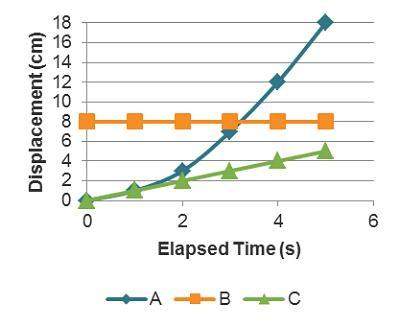
Mathematics, 25.01.2021 01:50 jimennacastillo15
To investigate the influence of distracted driving, 13 volunteers were asked to participate in a study involving a driving simulator. The participants drove at a safe speed but were told to stop the car at a random moment during the simulation. The scatterplot shows the reaction time and the simulated car’s stopping distance (in feet) for each volunteer. The value of r for the scatterplot is 0.935.
How would the correlation change if the stopping distances were recorded in meters, rather than feet?
A. The value of the correlation coefficient would not change.
B. Since the points would be more spread out, the value of the correlation coefficient would decrease.
C. Since the number of meters would be less than the number of feet, the value of the correlation coefficient would increase.
D. Since the number of meters would be less than the number of feet, the value of the correlation coefficient would decrease.


Answers: 3


Another question on Mathematics

Mathematics, 21.06.2019 16:00
What is the standard deviation of the following data set rounded to the nearest tenth? 3, 17, 18, 15, 12, 21, 9
Answers: 2


Mathematics, 21.06.2019 18:40
Airplane speeds are measured in three different ways: (1) indicated speed, (2) true speed, and (3) ground speed. the indicated airspeed is the airspeed given by an instrument called an airspeed indicator. a plane’s indicated airspeed is different from its true airspeed because the indicator is affected by temperature changes and different altitudes of air pressure. the true airspeed is the speed of the airplane relative to the wind. ground speed is the speed of the airplane relative to the ground. for example, a plane flying at a true airspeed of 150 knots into a headwind of 25 knots will have a ground speed of 125 knots. the problems below refer to static and dynamic pressure. static pressure is used when a body is in motion or at rest at a constant speed and direction. dynamic pressure is used when a body in motion changes speed or direction or both. a gauge compares these pressures, giving pilots an indicated airspeed. in problem #s 1 and 2, use the following information. the indicated airspeed s (in knots) of an airplane is given by an airspeed indicator that measures the difference p (in inches of mercury) between the static and dynamic pressures. the relationship between s and p can be modeled by s=136.4p√+4.5. 1. find the differential pressure when the indicated airspeed is 157 knots. 2. find the change in the differential pressure of an airplane that was traveling at 218 knots and slowed down to195 knots. in problem #s 3 and 4, use the following information. the true airspeed t (in knots) of an airplane can be modeled by t=(1+a50,000) ⋅ s, where a is the altitude (in feet) and s is the indicated airspeed (in knots). 3. write the equation for true airspeed t in terms of altitude and differential pressure p. 4. a plane is flying with a true airspeed of 280 knots at an altitude of 20,000 feet. estimate the differential pressure. explain why you think your estimate is correct.
Answers: 2

Mathematics, 21.06.2019 19:40
The human resources manager at a company records the length, in hours, of one shift at work, x. he creates the probability distribution below. what is the probability that a worker chosen at random works at least 8 hours? probability distribution px(x) 6 hours 7 hours 8 hours 9 hours 10 hours 0.62 0.78 пол
Answers: 1
You know the right answer?
To investigate the influence of distracted driving, 13 volunteers were asked to participate in a stu...
Questions


Mathematics, 05.10.2019 21:20


Computers and Technology, 05.10.2019 21:20

Mathematics, 05.10.2019 21:20


History, 05.10.2019 21:20

Computers and Technology, 05.10.2019 21:20






Physics, 05.10.2019 21:30

History, 05.10.2019 21:30

Mathematics, 05.10.2019 21:30

History, 05.10.2019 21:30



English, 05.10.2019 21:30




